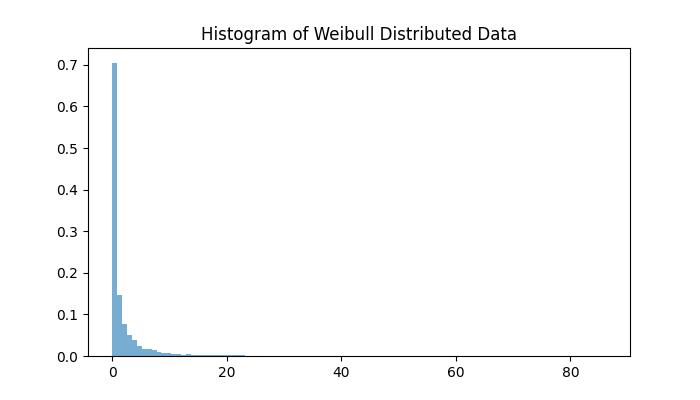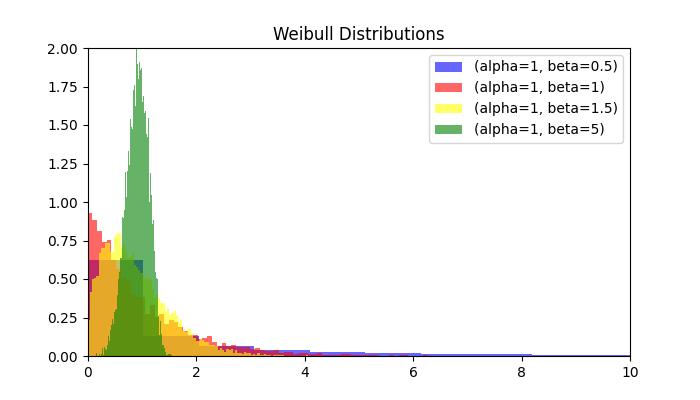Python 中的 random.weibullvariate() 方法生成遵循 Weibull 分布的随机数。Weibull 分布是连续概率分布,取决于两个正参数 alpha (α) 和 beta (β) 的值,这两个参数都必须大于 0。参数 alpha (α) 定义分布的尺度。其中,参数 beta (β) 定义分布的形状。
注意 − 这个函数不能直接访问,所以我们需要导入 random 模块,然后我们需要使用 random 静态对象调用这个函数。
语法
以下是 weibullvariate() 方法的语法 -
参数
Python random.weibullvariate() 方法接受以下参数 -
- alpha:这是 Weibull 分布的尺度参数,它必须大于 0。
- beta:这是 Weibull 分布的形状参数,它也必须大于 0。
返回值
此 random.weibullvariate() 方法返回一个遵循 Weibull 分布的随机数。
示例 1
让我们看一个使用 random.weibullvariate() 方法从尺度参数为 2 和形状参数为 3 的 Weibull 分布中生成随机数的基本示例。
以下是输出 -
Generated random number from Weibull distribution: 1.9258753905992894
注意:由于程序的随机性,每次运行程序时生成的 Output 都会有所不同。
示例 2
下面是一个示例,它使用 random.weibullvariate() 方法生成并显示一个直方图,显示 scale 参数为 1 且形状参数为 0.5 的 Weibull 分布式数据的频率分布。
在执行上述代码时,您将获得如下所示的类似输出 -

示例 3
下面是另一个示例,它使用 random.weibullvariate() 方法生成并显示一个直方图,该直方图显示来自 Weibull 分布的数据分布。
上述代码的输出如下 -




